New Advances in Algebra, Ring Theory and Homological Algebra, 2nd Edition
A special issue of Mathematics (ISSN 2227-7390). This special issue belongs to the section "Algebra, Geometry and Topology".
Deadline for manuscript submissions: 30 November 2024 | Viewed by 6666
Special Issue Editors
Interests: module theory; homological algebra; quivers representation theory
Special Issues, Collections and Topics in MDPI journals
Interests: module theory; homological algebra; quivers representation theory
Special Issues, Collections and Topics in MDPI journals
Interests: module theory; homological algebra; quivers representation theory
Special Issues, Collections and Topics in MDPI journals
Special Issue Information
Dear Colleagues,
The development of associative algebra during the last century has resulted in the emergence of numerous theories or specialties that have offered solutions to many of the needs of the society we live in, increasingly developed from a technological point of view.
These needs fall into two broad groups: purely technological needs and theoretical needs associated with developments in both applied algebra and other branches of mathematics. After all, it is not unreasonable to think that algebra is something like the “mathematics of mathematics”.
There are many branches of algebra whose contributions solve problems posed by the scientific challenges arising from the advancement of technology. Two of them also stand out for their popularity in society: cryptography and coding theory.
Additionally, from a theoretical point of view, the momentum that some disciplines have had in the last 20 years is remarkable. Thus, homological algebra has been given a big push with the emergence of the different classes of Gorenstein modules, and especially in recent years, of the relative Gorenstein modules. Moreover, the emergence of Hopf Algebras has had a huge impact on many branches of mathematics and physics—and, of course, one cannot forget the very active branches of module theory and quivers representation theory, with immense applications at all times.
Thus, we are pleased to present this Special Issue of Mathematics as a tool to share recent and interesting results in the branches of homological algebra, module theory, quivers representation theory, Hopf algebras, cryptography, and coding theory.
Prof. Dr. Juan Ramón García Rozas
Prof. Dr. Luis Oyonarte Alcalá
Prof. Dr. Driss Bennis
Guest Editors
Manuscript Submission Information
Manuscripts should be submitted online at www.mdpi.com by registering and logging in to this website. Once you are registered, click here to go to the submission form. Manuscripts can be submitted until the deadline. All submissions that pass pre-check are peer-reviewed. Accepted papers will be published continuously in the journal (as soon as accepted) and will be listed together on the special issue website. Research articles, review articles as well as short communications are invited. For planned papers, a title and short abstract (about 100 words) can be sent to the Editorial Office for announcement on this website.
Submitted manuscripts should not have been published previously, nor be under consideration for publication elsewhere (except conference proceedings papers). All manuscripts are thoroughly refereed through a single-blind peer-review process. A guide for authors and other relevant information for submission of manuscripts is available on the Instructions for Authors page. Mathematics is an international peer-reviewed open access semimonthly journal published by MDPI.
Please visit the Instructions for Authors page before submitting a manuscript. The Article Processing Charge (APC) for publication in this open access journal is 2600 CHF (Swiss Francs). Submitted papers should be well formatted and use good English. Authors may use MDPI's English editing service prior to publication or during author revisions.
Keywords
- covers, envelopes and cotorsion pairs
- relative gorenstein modules and objects
- gorenstein dimensions
- grothendieck categories
- rings and modules
- (sub)projectivity, (sub)injectivity, (sub)flatness domains and extensions
- complexes of modules
- Hopf algebras
- algebraic coding theory
- cryptography
- representations of quivers by modules.





